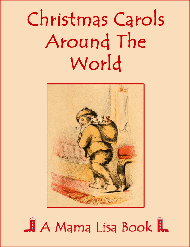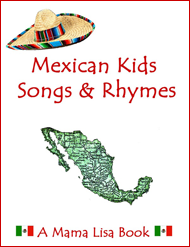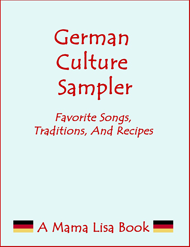November 11th is St. Martin’s Day! It’s celebrated in parts of Belgium, Holland, Netherlands, Austria, Germany, France, Poland, Latvia and Estonia and it commemorates the day St. Martin was buried.
In the pre-Christian era, mid November was celebrated as a festival of light and fertility. Leftovers from these earlier pagan rites became mixed up with legends about the life of the saint. The combination led to the holiday’s many wonderful traditions.
When St. Martin was a young man, he was a soldier. The legend has it that one day in the winter, while on horseback, he came upon a poor man, barely clothed. St. Martin took out his sword and cut his cloak in half. He gave one half to the poor man for warmth.
Later he had a dream in which Jesus was wearing the half cloak. Jesus said to the angels “Martin clothed me with this robe”. When St. Martin woke up the robe was in one piece again. After that dream he decided to become baptized. Later he quit being a soldier and became a monk.
Today, the story is remembered by the tradition of children parading after dark, carrying lanterns and singing songs, following a person on horseback who pretends to be St. Martin. The parade is often ended with a bonfire. (The lanterns and bonfire seem to be a remnant from the old pagan festivals of light.)
It some places, the children go door to door, caroling, with their lanterns. They’re given treats or money.
St. Martin was famous for his kindness. He was also known for his modesty and simplicity. In fact, it was his great humbleness that led to another important tradition associated with the holiday: It’s said his parishioners loved him so much that they insisted he become bishop of Tours. But he felt unworthy of the honor, and so, when they came to appoint him, he hid in a barn filled with geese. When his pursuers approached, the geese began to cackle, giving away his position. He killed one of the geese, on the spot, in revenge. Later that night it was eaten for dinner, and people all over Europe still celebrate the Saint’s day by eating geese. (Although some people think the real reason geese are eaten at this time of year is that it is November when they’re ready for slaughter. Farmers couldn’t afford to feed too many geese over the winter so they would slaughter them at harvest time.)
In Sweden St. Martin’s Day is mainly the celebration of the goose – they’ve forgotten all the other connotations. They cook goose and make a black soup out of the remains.
After St. Martin did become the bishop, he ended up converting many people in northern France and parts of Belgium to Christianity.
In some part of east Flanders, in Belgium, there’s another interesting tradition: St. Martin comes in the middle of the night of the 10th to the 11th of November (instead of St. Nicholas in December) and leaves children presents.
St. Martin’s Day is one of the happiest of European holidays! It’s enjoyed by everyone. (Except, maybe, the geese…)
Here are two songs children sing in Germany for St. Martin’s Day, each in German and with an English translation.
A legend and a song from northern France about St. Martin
Belgian songs sung on St. Martin’s Day, plus about how St. Martin’s Day is like Christmas in parts of Belgium.
This article was posted on Monday, November 7th, 2005 at 10:58 pm and is filed under Belgium, France, Germany, Holidays Around the World, St. Martin's Day. You can follow any responses to this entry through the RSS 2.0 feed. You can skip to the end and leave a response. Pinging is currently not allowed.
5 Responses to “St. Martin’s Day, when children sing songs and parade with lanterns, and it’s time to eat a goose!”
Leave a Reply

























November 5th, 2007 at 1:03 am
I could not open the link to your recipe for Wechmann. Could you send it to me? My daughter’s German class is holding their lantern walk on Friday and I’d love to make it for them when they are done.
I loved all of the info on your blog.
Thank you,
Chris
September 10th, 2009 at 3:47 pm
Hi! I was surfing and found your blog post… nice! I love your blog. :) Cheers! Sandra. R.
December 1st, 2012 at 1:44 am
I would like to know what children ( preschoolers) learn from this festival? It seems that this tradition is popular in Europe, why do Waldorf schools celebrate it? how can you explain the meaning of this festival to little ones? are there any skills that children are learning through doing this?
Thank you, I’m just curious.
Gina
July 3rd, 2015 at 3:08 am
[…] am a New Zealander of German heritage, and every year while I was growing up we would celebrate St Martin’s Day with a Lantern Parade. One of the best parts was making our own lanterns. It would seem however, […]
December 30th, 2015 at 6:06 pm
Thank you very much for your website, this is brilliant, we are having a Christmas family reunion now, and were remembering our time living in Germany in late 1960’s and were trying to remember this song. Do you know if it has more verses? as we have vague recollections of another verse also? Thank you for this, and a Happy New year to you